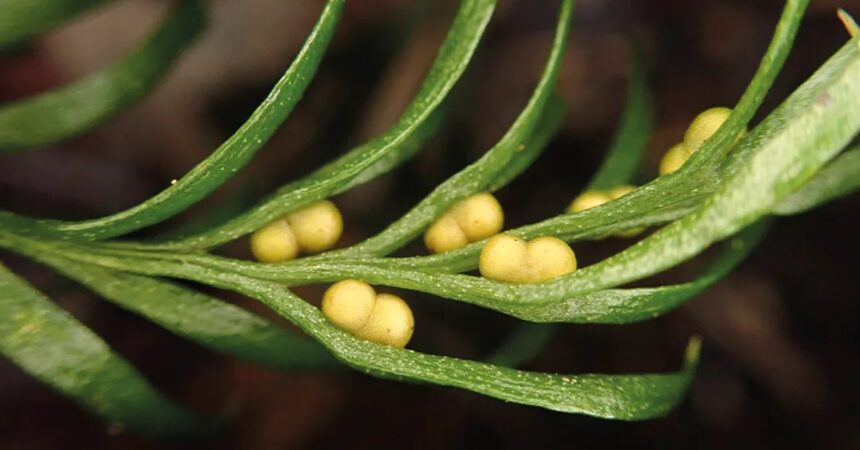The saying goes that good things come in small packages, and while the discovery of the world’s largest genome in any organism is an incredible find, the reality is a little bit more complicated than that. The New Caledonian fork fern species Tmesipteris oblanceolata has a genome that when stretched out would be taller than Big Ben’s tower, and is now a three-time world record holder.
With more than 100 meters of DNA (328 feet), the tiny unassuming fork fern has the largest amount of DNA stored in the nucleus of any living organism on the planet. To put this into context, the human genome has 3.1 gigabase pairs, which would stretch out to around 2 meters (6.5 feet), while T. oblanceolata has 160.45. The fern has thereby taken the largest fern genome, the largest plant genome, and the largest genome world records.
While this may sound surprising for such a small plant, six of the top 10 largest genomes are held by plants. The previous title holder Paris japonica, a Japanese flowering plant, has a genome of 148.89 gigabase pairs, while in the animal kingdom the marbled lungfish (Protopterus aethiopicus) joined the party at 129.90 Gbp, with the salamander species the Neuse River waterdog (Necturus lewisi) at 117.47 gigabase pairs. These species have some of the largest genomes among animals, but they’re far smaller than these plants.
Despite holding the world record, T. oblanceolata is actually at more of a disadvantage than its smaller-genomed compatriots. Having a big genome and lots of DNA requires big cells, meaning that the larger-genomed species are more likely to be slower growing and less efficient at photosynthesis.
“In the majority of cases, it’s a negative fact. If you have a big genome, you have to have a big cell to house it in. So what we see is that plants with big genomes are restricted, so less efficient photosynthesis than species with small genomes, where you get a whole range of photosynthetic efficiency. And of course, photosynthesis makes sugar, which makes the ability to put on biomass. That means that these plants with the bigger genomes are less efficient or less able to grow quickly,” Dr Ilia Leitch, Senior Research Leader – Character Evolution at RBG Kew, told IFLScience.
As well as less efficient photosynthesis, the giant genome of T. oblanceolata means it is less able to compete with other more fast-growing species. The genome is so large that the team believes the fern to be octoploid, meaning it has eight sets of chromosomes. Humans, by contrast, are diploid, only having two sets.
“The bigger your genomes, the more constraints you have on ecological opportunities and your ability to grow and compete successfully with other plants. And so, the species with the biggest genomes, like Paris japonica or Tmesipteris, this fork fern, tend to be found in very stable environments, which are not competitive,” continued Leitch.
With the record breaker now firmly in the history books the question remains: Could we find something with an even bigger genome? Leitch doesn’t think so.
“This genus Tmesipteris, this fork fern genus, they’re 15 species. And we’ve got genome size data now for five or six of them. And this is the record holder, but there are others, which are in that same area, but not quite as big. It’s possible if we got one other one, we were able to collect and analyze it, it might be 161 gigabases, but I don’t think we’re gonna get something that is 200
To even get to analyze this plant was an achievement in itself, as senior authors Dr Jaume Pellicer and Dr Oriane Hidalgo traveled to New Caledonia to work with locals to find and transport the plant back to Europe for testing. This analysis involved flow cytometry, using dye to stain the DNA in the nuclei within the cells and then measuring how much dye had bound to the DNA.
“If this tiny little plant, which, you know, you really wouldn’t notice if you trod on it, you know, but it holds this world record high. If it can raise the profile of plants – because plants are so important for the survival of our planet, and all our life depends on plants, because they produce the oxygen we breathe, the air, the clothes that we wear, often the food that we eat. So, keeping plants in people’s minds is always good,” concluded Leitch.














